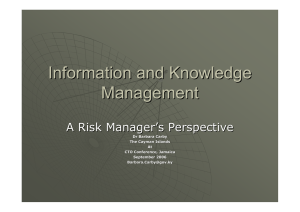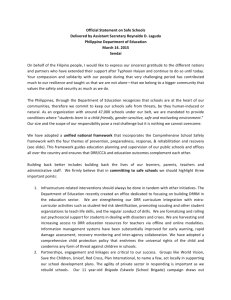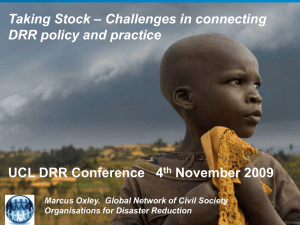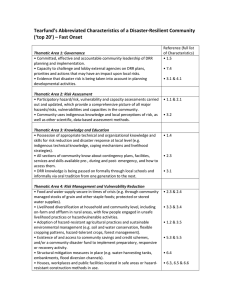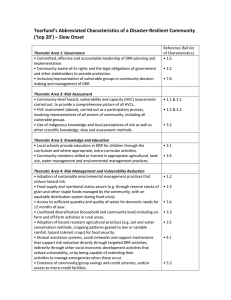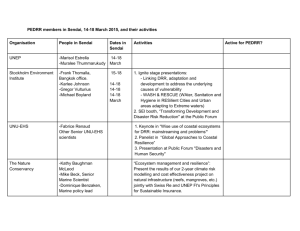DRR commitments and initiatives
advertisement
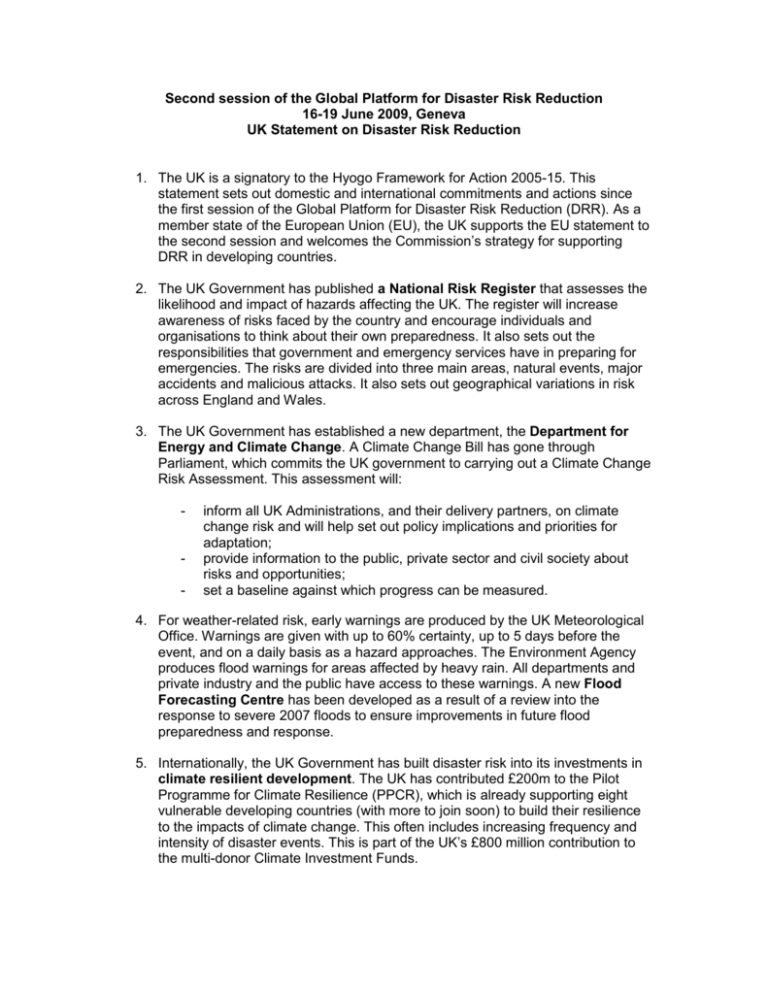
Second session of the Global Platform for Disaster Risk Reduction 16-19 June 2009, Geneva UK Statement on Disaster Risk Reduction 1. The UK is a signatory to the Hyogo Framework for Action 2005-15. This statement sets out domestic and international commitments and actions since the first session of the Global Platform for Disaster Risk Reduction (DRR). As a member state of the European Union (EU), the UK supports the EU statement to the second session and welcomes the Commission’s strategy for supporting DRR in developing countries. 2. The UK Government has published a National Risk Register that assesses the likelihood and impact of hazards affecting the UK. The register will increase awareness of risks faced by the country and encourage individuals and organisations to think about their own preparedness. It also sets out the responsibilities that government and emergency services have in preparing for emergencies. The risks are divided into three main areas, natural events, major accidents and malicious attacks. It also sets out geographical variations in risk across England and Wales. 3. The UK Government has established a new department, the Department for Energy and Climate Change. A Climate Change Bill has gone through Parliament, which commits the UK government to carrying out a Climate Change Risk Assessment. This assessment will: - - inform all UK Administrations, and their delivery partners, on climate change risk and will help set out policy implications and priorities for adaptation; provide information to the public, private sector and civil society about risks and opportunities; set a baseline against which progress can be measured. 4. For weather-related risk, early warnings are produced by the UK Meteorological Office. Warnings are given with up to 60% certainty, up to 5 days before the event, and on a daily basis as a hazard approaches. The Environment Agency produces flood warnings for areas affected by heavy rain. All departments and private industry and the public have access to these warnings. A new Flood Forecasting Centre has been developed as a result of a review into the response to severe 2007 floods to ensure improvements in future flood preparedness and response. 5. Internationally, the UK Government has built disaster risk into its investments in climate resilient development. The UK has contributed £200m to the Pilot Programme for Climate Resilience (PPCR), which is already supporting eight vulnerable developing countries (with more to join soon) to build their resilience to the impacts of climate change. This often includes increasing frequency and intensity of disaster events. This is part of the UK’s £800 million contribution to the multi-donor Climate Investment Funds. 6. In supporting governments and communities to build disaster resilience, we work primarily through international agencies and NGO partners, to whom we provided $15m in 2008-09. Key international partners in addition to UNISDR include the World Bank Global Facility for Disaster Risk Reduction (GFDRR), UNDP’s Bureau for Crisis Prevention and Recovery (BCPR) and the International Federation of the Red Cross and Red Crescent (IFRC). 7. The UK provides up to 10% of the humanitarian funding it provides to major disasters overseas to longer term DRR programmes in affected areas. Recent examples include the Sechuan earthquake in China (this triggered an investment of £350,000 to DRR) and Cyclone Nargis in Burma (triggering £4.5 million for DRR), both in 2008. Activities have included the reconstruction of cycloneresistant shelter on the delta hit hardest by Nargis.

